GC_ET_AFX_P2D.html
2021-01-06 10:37:32
 the "P2D" page
the "P2D" page
*************************************************************************************************
"Parallel 2 Differential " radically different Dual-Channel CW Audio Filters
*************************************************************************************************
The designed advantages coming from the P2D approach are :
1) a flat-topped "W"ide Passband, for easier capture of CW signals.
2) a "N"arrow Passband with extremely steep sideband skirts,
3) uses Parallel Filters followed by un-tuned Differential stages
4) if followed by a MFB Q=7 stage, then a single R(freq) can vary the f() narrow passband frequency.
.
******************************************************************************************************
Note: In the following diagrams, R2 to Virtual Ground is the R(freq) for adjusting f(center)
Note: the -3dB level is equivalent to the 700 mV level in these Bode Plots.
*******************************************************************************************************
List: April 10, 2015, gae
P2D-P33D-P44D Special Differentiated Stages to replace Filter stages.
P2D-DIF-WN Special Differentiated Stages to replace Filter stages.
************************************************************************************
P2D-P33D-P44D
Special Differentiated Stages to replace Filter stages.
Two Tuned Summing Stages
replaced by Two Un-Tuned Differentiation Stages.
Same Results !!!
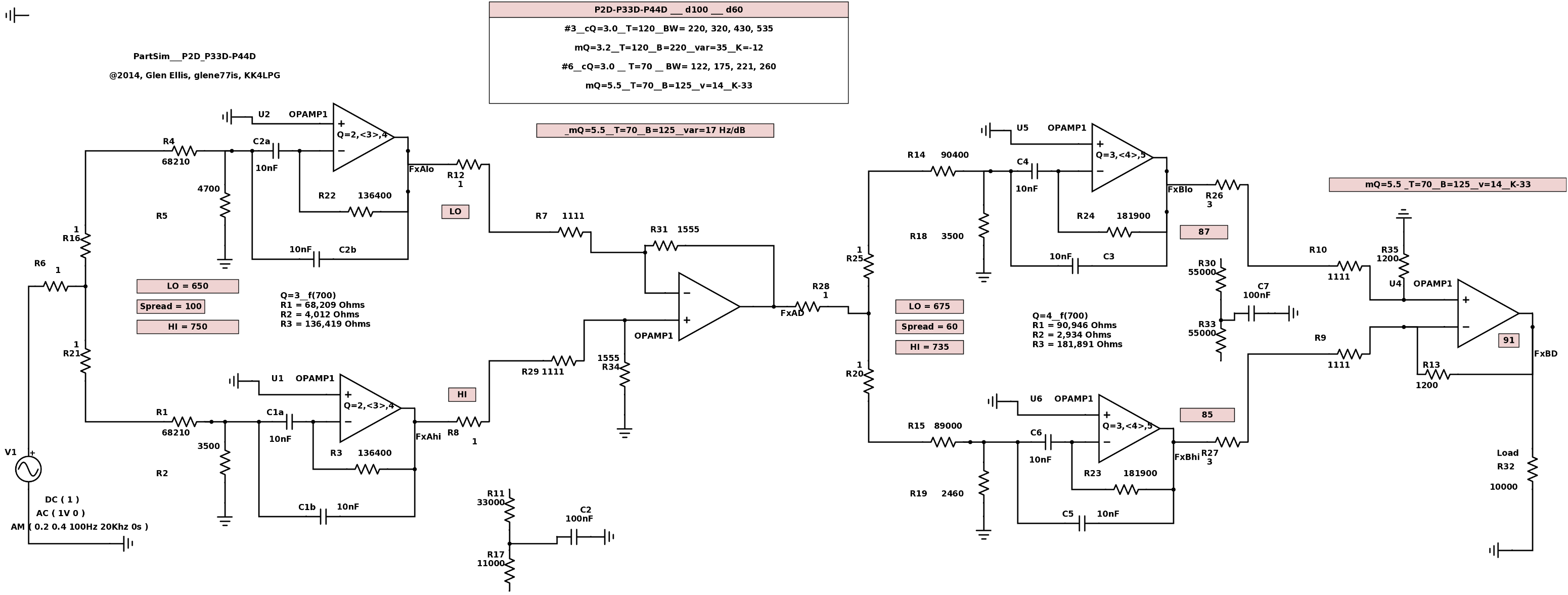
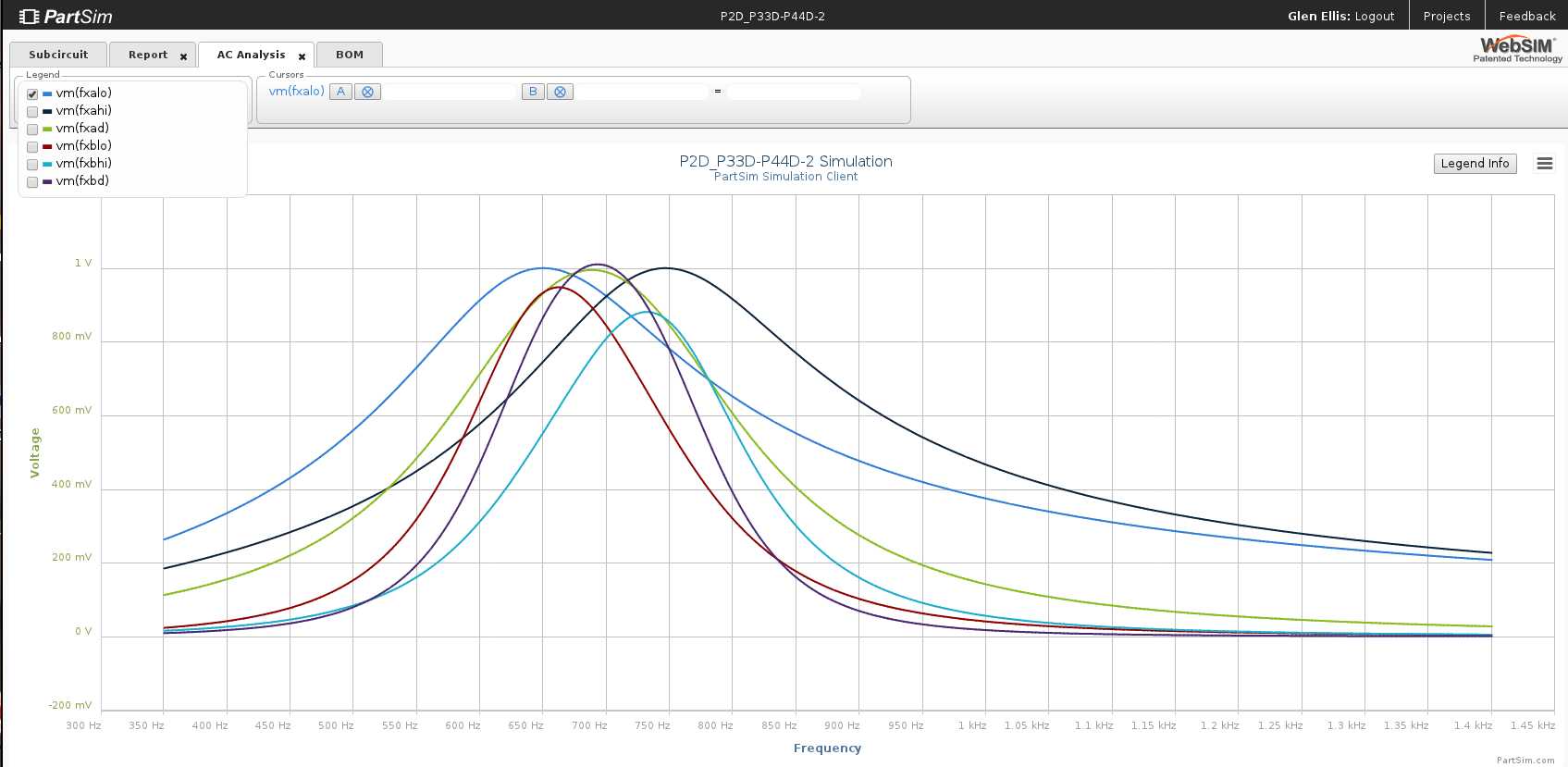
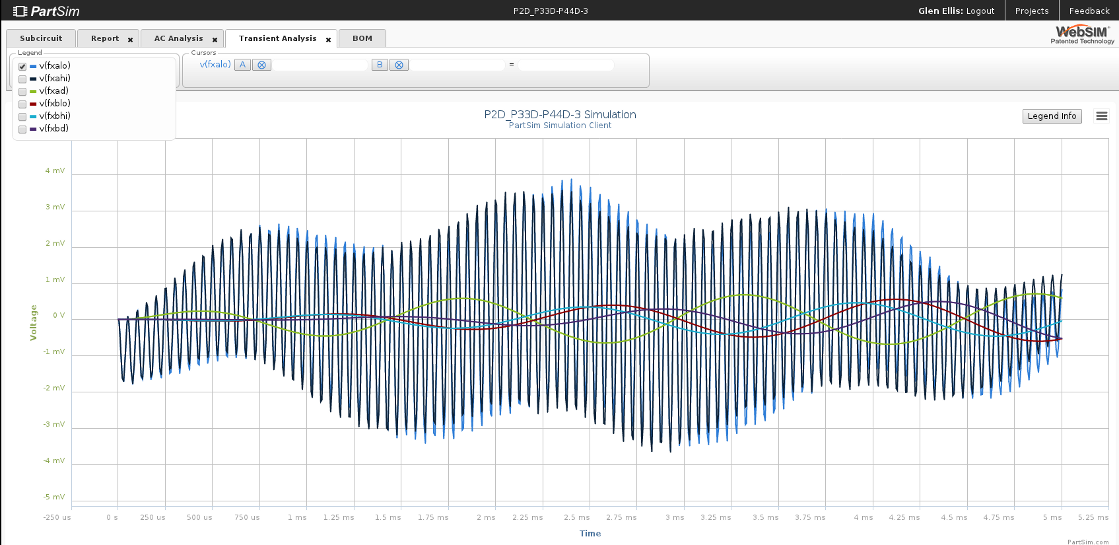
Plot of Transient Analysis, Sine Input,
showing Phase-Shifting to obtain the required Band-Pass.
************************************************************************************
P2D-DIF-WN
P2D-P77D-P55D- for extremely steep "N" sidebands.
Special Differentiated Stages to replace Filter stages.
Two Tuned Summing Stages
replaced by Two Un-Tuned Differentiation Stages.
Same Results !!!
First Triad is Q=7 +/- 50 Hz , then Differentiated.
Second Triad is Q=5 +/- 25 Hz , then Differentiated.
First Triad is "W"ide v=15, extremely steep for a "W"ide Filter.
Second Triad is "N"arrow v=9.5 !!! Close to DSP and already analog for Audio Output.
At +/-90 degrees from f(700) the signal is near -48dB down.
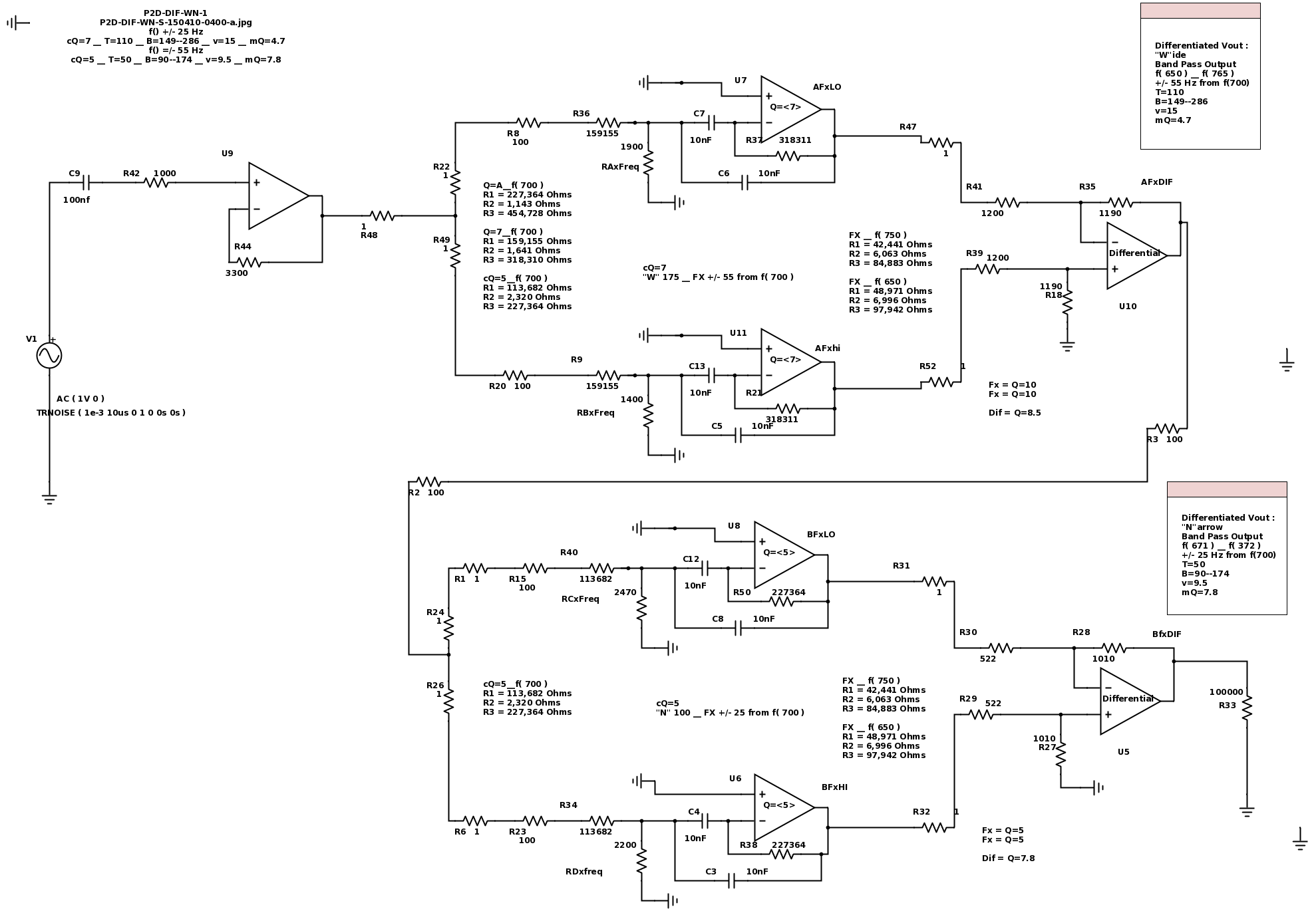
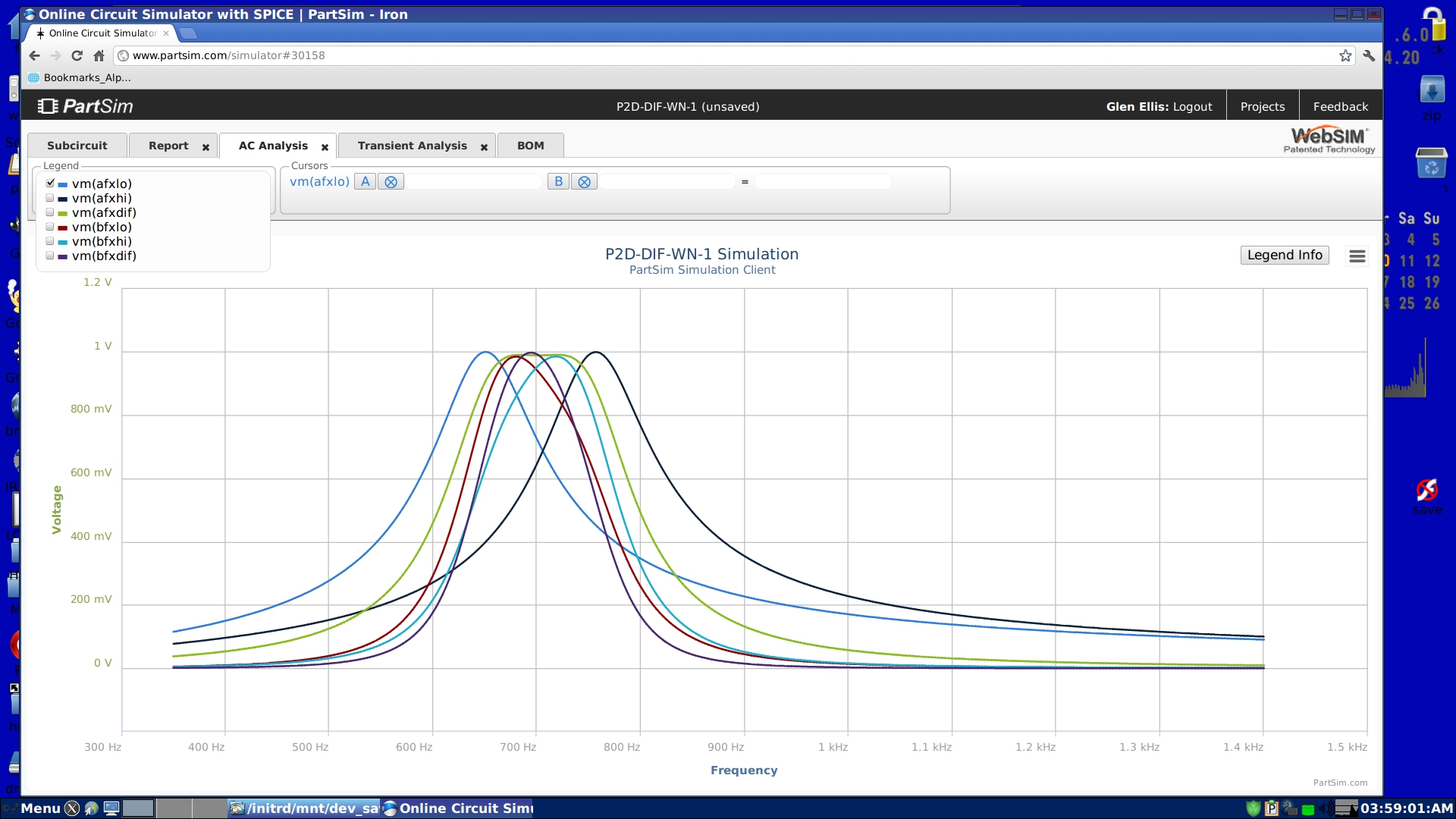
Differential Traces are : "W"ide GREEN . "N"arrow Black .
There are two passbands for "W" and two passbands for "N", each followed by a Differential Stage.
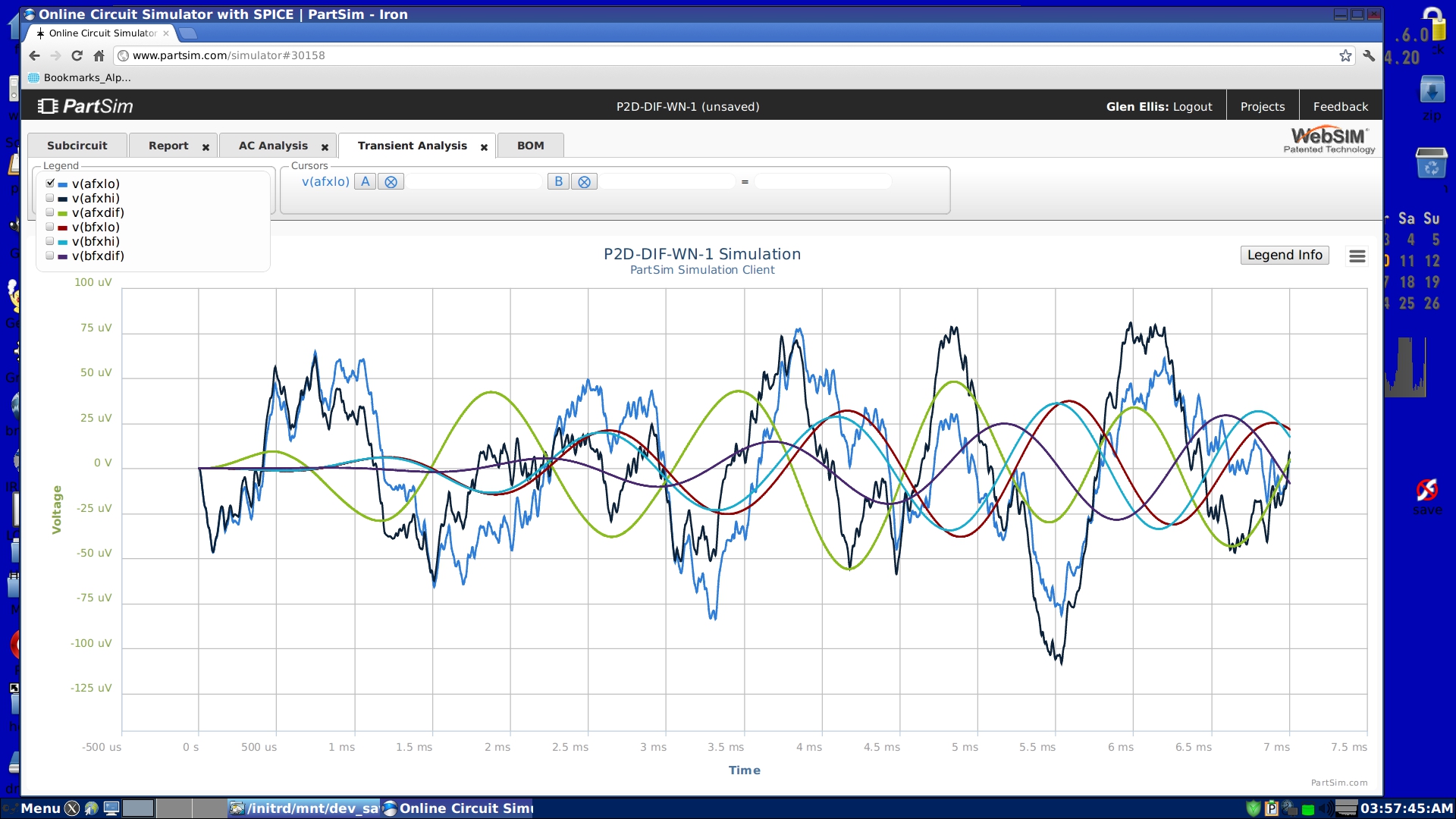
Signal injected was "Noise".
Shown is the effectiveness of a Differentiator in eliminating Common Mode noise signal.
***************************************************************************************
*** Conclusions about the P2D design approach :
The Parallel designs have been intriguing to develop.
These are really radical 'techy' circuits and good to brag about.
* The 12 stage (P2S-QAA-P445) circuit produces a "N"arrow filter output
that compares favorably with DSP (after run through a DAC for the earphone signal).
but are very ticky to construct and tune.
* The P2D-DIF designs are much simpler, easy to tune, and produce passbands similar to DSP.
* The AFX-RSF-S4-Q7 version #8 Filter circuit could be improved by using the P2D-DIF filter section.
AFX , with (1) Roofing stage based on P2D triad, (2) driving the log-limiter,
(3) driving the Quad Filter Stage , (4) followed by the "W" Integrated and "N" Differentiated Stages
can produce excellent results, and is a well-developed good-working project.
AFX "W"ide and "N"arrow stages produce similar results, and is much better for building and tuning.
.
That is the author's General Conclusion.
.
*******************************************************************************************
*************************************************************************************
 the "P2D" page
the "P2D" page




